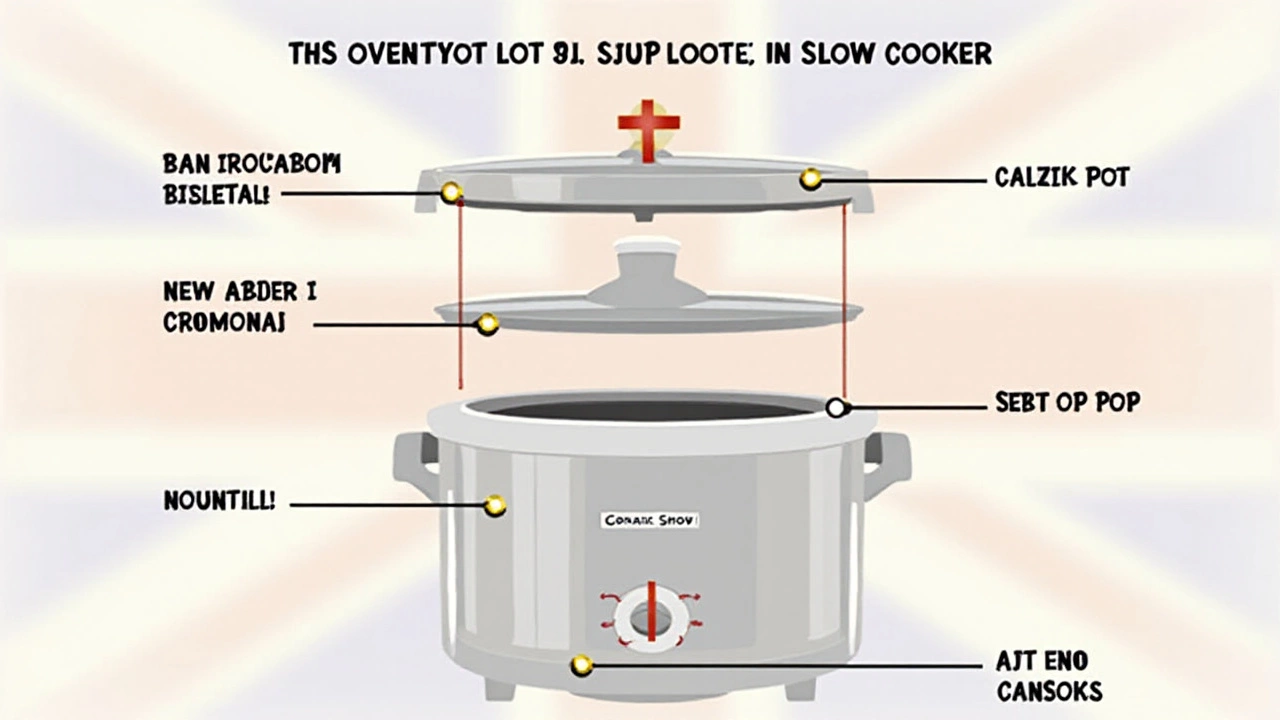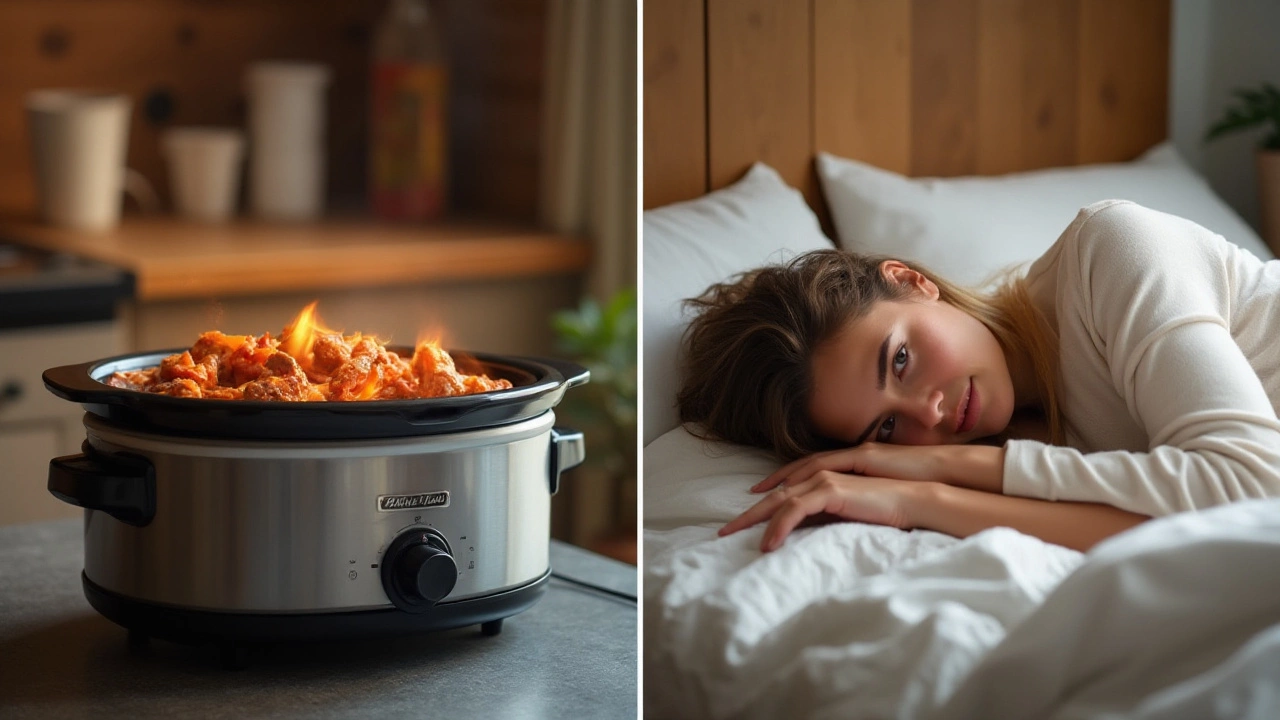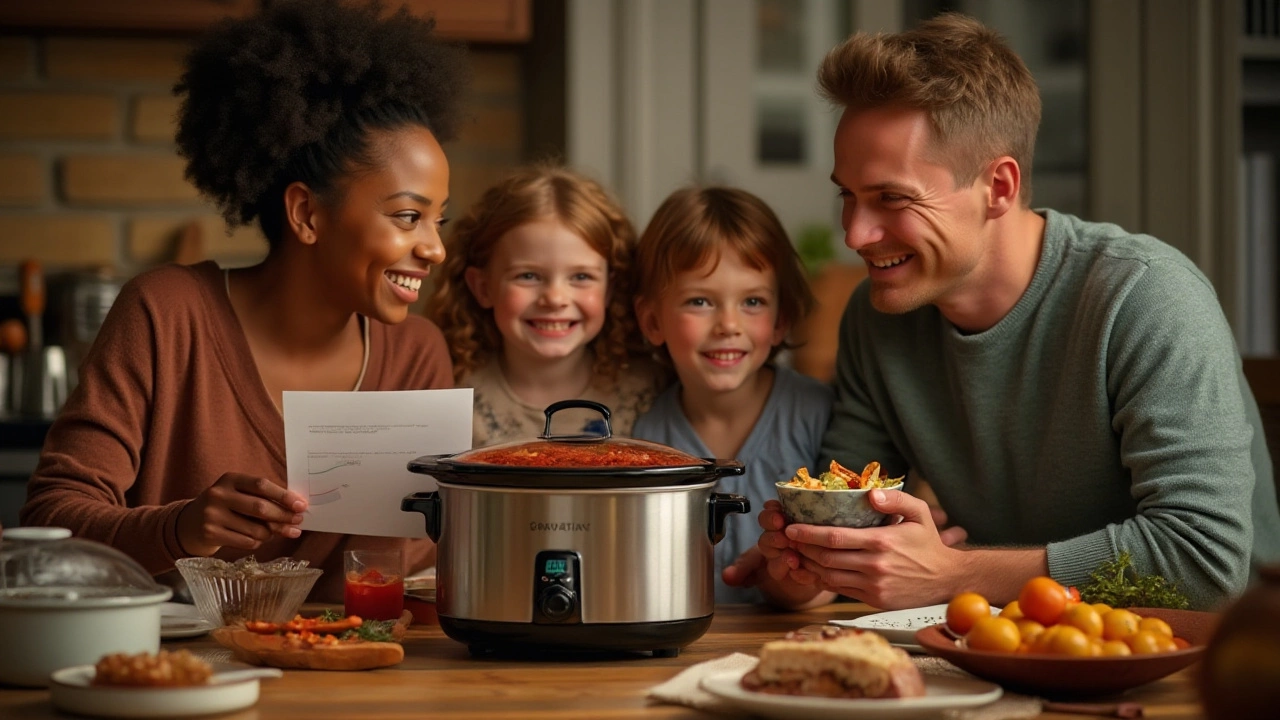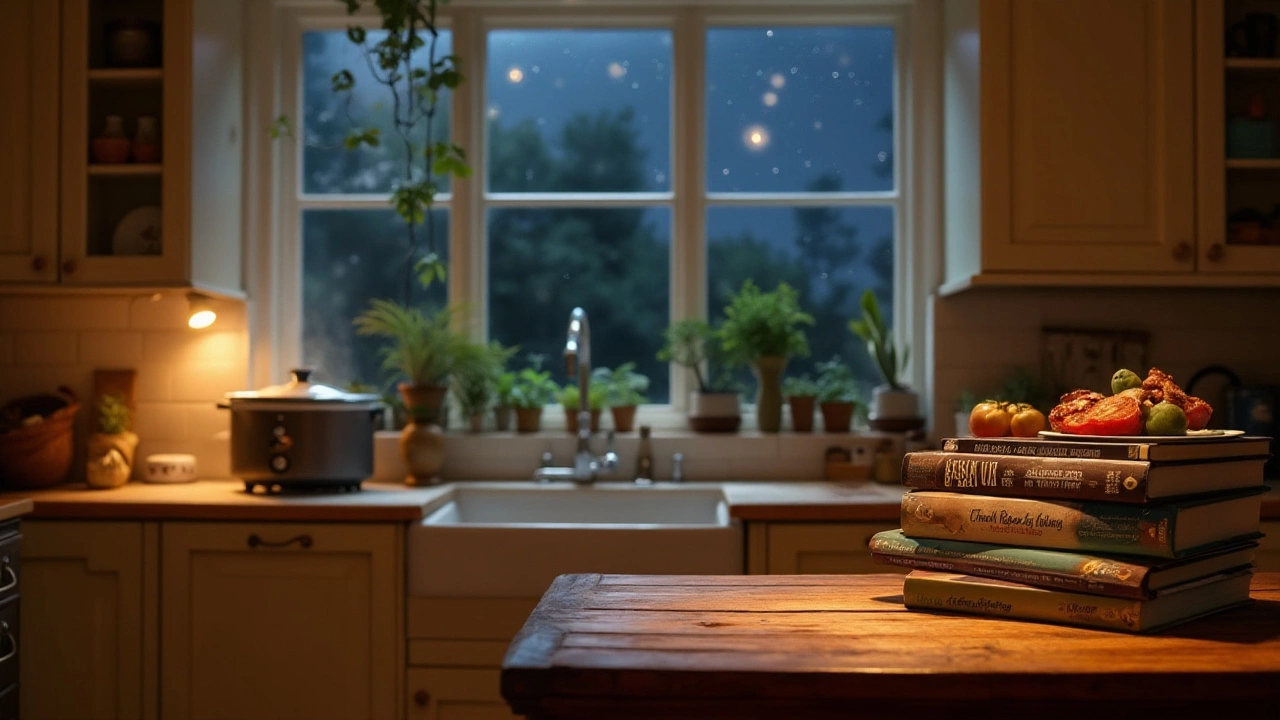Slow cookers are a beloved kitchen appliance, hailed for their convenience and ability to transform tough cuts of meat into tender, flavorful dishes. But when it comes to leaving them on overnight, some might hesitate, worrying about potential risks. If you've ever wondered whether it's okay to let your slow cooker work while you slumber, you're not alone.
Sleeping while your dinner cooks might sound like a dream, but ensuring safety and peace of mind requires understanding how these devices operate. Discover methods to maximize your slow cooker’s efficiency overnight without losing sleep over safety concerns. Whether you're cooking up a hearty stew or a comforting pot roast, there are smart strategies to keep in mind for a safe and successful overnight cooking experience.
- Understanding Slow Cooker Functionality
- Safety Tips for Overnight Cooking
- Common Mistakes and How to Avoid Them
- Benefits of Overnight Slow Cooking
Understanding Slow Cooker Functionality
Slow cookers, often hailed as the saving grace for busy home chefs, revolutionized cooking with their blend of convenience and flavor enhancement. These devices, typically designed with a simple user interface, operate on the principle of low-temperature, long-duration cooking, which is the bedrock of their appeal. The slow and even distribution of heat within the pot ensures that even the toughest cuts of meat transform beautifully into tender, melt-in-your-mouth experiences, while vegetables simmer to perfection, absorbing flavors and maintaining nutritional value.
A slow cooker usually consists of three main components: the base with the heating element, the removable pot (often made of ceramic), and the lid. When you turn on a slow cooker, electricity powers the heating element at the base, gradually warming the insert. This, in turn, heats the food and liquid slowly. One of the remarkable features of a slow cooker is its ability to maintain a steady temperature hovering just below boiling, around 160 to 205 degrees Fahrenheit. This environment is hot enough to cook food thoroughly while preventing rapid evaporation of liquids.
What might surprise some is that slow cookers have a resilience that makes them perfect for overnight cooking. Their construction allows for high endurance against prolonged heat exposure, with many models even having a keep-warm setting that maintains food at a safe temperature after cooking. This feature is particularly beneficial for those with hectic schedules, offering flexibility and eliminating the pressure of frequent monitoring.
Intriguingly, the low-temperature cooking of a slow cooker is not only about convenience but also food safety. According to the USDA, cooking foods slowly at low temperatures ensures that bacterial growth is inhibited while flavors get a considerable enhancement. This method allows meats to cook thoroughly, thus reducing the potential health risks associated with under-cooked proteins. In essence, a slow cooker creates an environment that amplifies flavors and contributes to a safe cooking experience.
"The steady heat and moisture are what make slow cookers ideal for soups, stews, and braised dishes," states Barbara Gibbs Ostmann, a culinary expert who has penned several acclaimed cookbooks.
For those wondering about energy consumption, slow cookers are remarkably efficient. On average, a slow cooker uses roughly the same amount of energy as a standard light bulb, typically about 50 to 300 watts. When compared with the energy gulped down by a conventional oven, a slow cooker not only saves on electricity bills but also keeps the kitchen cooler —a welcome bonus in the summer months.
Many modern slow cookers now come equipped with advanced technology, such as timers and programmable settings, making them even more user-friendly. These features allow one to set the cooking time, after which the device automatically shifts to a low-power, keep-warm mode, ensuring your meal is ready whenever you are. For the tech-savvy cook, Wi-Fi-enabled slow cookers that can be controlled via smartphone apps offer even more flexibility, aligning perfectly with a busy lifestyle.

Safety Tips for Overnight Cooking
Using a slow cooker can be a safe and efficient way to prepare meals while you sleep, but it’s crucial to follow some essential safety measures. First, ensure you place your slow cooker on a sturdy, heat-resistant surface away from walls or flammable materials. Cookers generate heat that can potentially damage surfaces or curtains. Important to remember is to also always check that your cooker and its components are not showing signs of wear or damage before use, as a malfunction could lead to safety hazards. Cleaning the cooker after each use and checking for damaged cords or loose fittings greatly ensures peace of mind.
Another key aspect is to refrain from overloading the cooker. Filling it beyond its recommended capacity might prevent the device from cooking your food properly and could lead to spillage and even overheating. Manufacturers often specify a maximum limit, which is typically about two-thirds full. This gives the food enough room to cook evenly and prevents unnecessary mess. Prepping ingredients beforehand also makes a difference; ensure all meats are fully thawed before cooking, as frozen items can cause the internal temperature to remain undercooked and risk bacterial growth.
Setting an appropriate cooking time is also essential; most overnight cooking is best done on low settings for food simmering over eight hours. It's a good practice to follow the suggested times specified in the recipes applicable to your meal. Modern slow cookers usually have programmable features that allow cooking to automatically switch to the 'warm' setting post-cooking, easing concerns about overcooking or burning your meals. The inclusion of this feature optimizes your experience, permitting you to rest assured while maintaining a cooked meal by morning.
Incorporating alertness to fire safety can be enhanced by keeping a functioning smoke alarm near your kitchen. This step, though seemingly mundane, adds an extra layer of security when cooking while you sleep. Remember, proper usage entails fully understanding your device and reading through instructions diligently. As Julia Child, a famous chef once said, “The only real stumbling block is fear of failure. In cooking, you’ve got to have a what-the-hell attitude.”
“These devices are designed with safety in mind. When used correctly, slow cookers can allow convenient and worry-free meal preparations,” said Lisa Lillien, a well-known food writer.
For those who truly want to engage a methodical approach, here is a quick checklist to bear in mind:
- Ensure your slow cooker is on a solid, non-flammable surface.
- Do not exceed two-thirds full to prevent spills and ensure even cooking.
- Never put frozen ingredients directly into the cooker to avoid temperature issues.
- Utilize programmable models for efficiency in meal prep and assurance.
- Equip your kitchen with active smoke detectors for added vigilance.
By paying close attention to these details, you can enjoy the unhindered convenience of letting your slow cooker work its magic overnight, delivering you delightful dishes to wake up to. The use of slow cookers is certainly a triumph of modern kitchen convenience, granting both time-efficiency and safety when employed thoughtfully with these measures.

Common Mistakes and How to Avoid Them
As with any method of cooking, there are several missteps that are easy to make when using a slow cooker, especially during those long overnight sessions. One prevalent mistake is overfilling the appliance. Many home cooks think that packing it to the brim will yield more food or better results. However, slow cookers need space for circulating heat evenly. Overfilling can lead to inadequate cooking. This can result not only in unevenly cooked meals but also potential spills that could create a hazard. For optimal results, fill the cooker no more than two-thirds full to ensure even and safe cooking.
Another common error is lifting the lid too often. It's tempting to peek and see how that beef stew is coming along, but every time you lift the lid, a significant amount of heat and moisture escapes. This means your slow cooker has to work overtime to regain that lost heat, extending the cooking time. It's best to avoid lifting the lid at all unless you absolutely have to, especially during overnight sessions. Remember, slow cookers are designed to retain heat and moisture within them, and lifting the lid disrupts this crucial balance.
Ignoring manufacturer instructions is a frequent oversight. Every slow cooker is different, and its manual provides specific guidelines on how to use it effectively. Each model may have its own intricacies regarding heat settings and cook times. Failing to follow these instructions can lead to undercooked food or even a malfunction. Users should always familiarize themselves with the appliance before embarking on any lengthy cooking project.
According to The Kitchn, "reading your slow cooker's manual may sound basic, but it’s one of the best ways to prevent common kitchen mishaps."
People often forget about the importance of cutting uniform-sized ingredients. This might seem trivial, but having vegetables or pieces of meat in varying sizes can lead to uneven cooking. Larger pieces may remain undercooked while smaller ones become mushy. Take the time to cut ingredients uniformly to ensure everything is cooked at the same rate. This will enhance the texture and flavor of your dishes.
Finally, using low-quality ingredients is a mistake some tend to overlook. The whole point of slow cooking is to bring out the flavors over time. Starting with subpar ingredients will result in subpar meals. Investing in fresh produce and quality cuts of meat will pay off, resulting in a dish that's both tasty and satisfying after a long cook. Remember, the slow cooker does magic with whatever ingredients you choose, so providing it with the best will lead to delightful results.

Benefits of Overnight Slow Cooking
Imagine waking up to a home filled with the warm, inviting aroma of a savory meal that’s been slow-cooked to perfection. This is one of the prime benefits of using a slow cooker overnight. Leaving a slow cooker on during the night can be a game-changer for busy individuals or families who want a nutritious meal but lack the time to prepare and cook it during their hectic days. By taking advantage of the slow cooker’s time-efficient magic, one can easily balance busy schedules with the desire to consume wholesome homemade dishes.
Using your slow cooker overnight helps to maximize flavor. Given the extended cooking period, the ingredients have ample time to meld together, releasing intricate flavors. This process is particularly beneficial when using herbs, spices, or tougher cuts of meat, which require prolonged cooking to bring out their rich, deep taste. Overnight slow cooking is akin to letting time itself become one of your ingredients—a chef's secret that transforms a standard recipe into extraordinary cuisine.
Slow cooking overnight is also a stress reliever. Planning meals that cook while you sleep allows you to focus on other daytime activities without the constant hustle of stove-side supervision. It can reduce the pressure of deciding what to cook after a long day at work, knowing that dinner will be ready and waiting for you. Plus, it tends to use less energy than traditional cooking methods, which might align with your goals to be more eco-friendly.
As food writer Cynthia Graubart notes, ‘The slow cooker is a busy cook’s best friend, always ready to welcome you home with something warm and tasty.’
Preparing meals overnight can simplify lunches and dinners for days to come. A large batch of chili or stew can be portioned into containers, providing ready-made meals for family members to enjoy throughout the week. It's an efficient way to make sure that everyone in the household is nourished without having to resort to takeout or fast food options. Given the slow cooker's design, which allows for even temperature distribution, food remains perfectly cooked and tender throughout, maintaining its appetizing quality even when reheated.
Lastly, if you value sleep as much as you do a good meal, overnight cooking fits seamlessly into your routine. You can focus on getting those vital hours of rest without needing to wake up early to start dinner preparations. Simply set up your ingredients before bed, and let the overnight cooking process work its culinary magic. By morning, the start of your day can be paired with the satisfaction of having completed the groundwork for a delicious meal. This seamless integration of meal prep into your routine reflects an intelligent and balanced approach to modern living.

